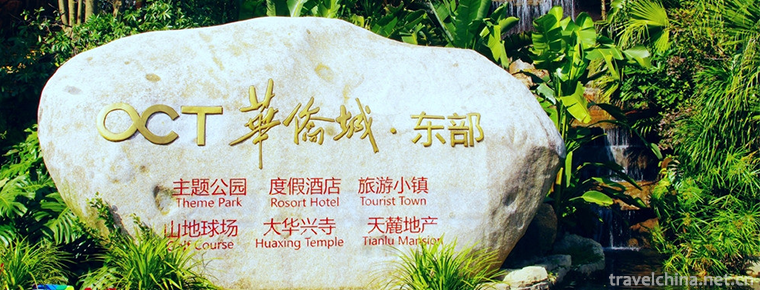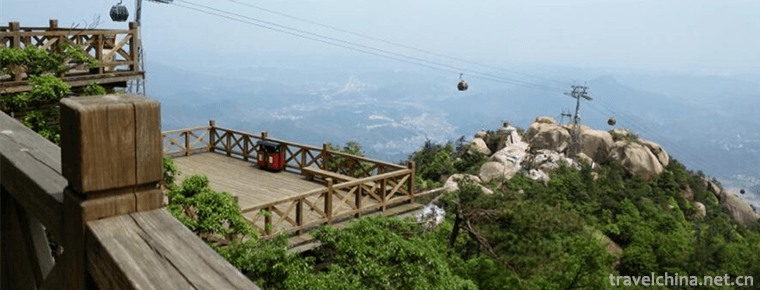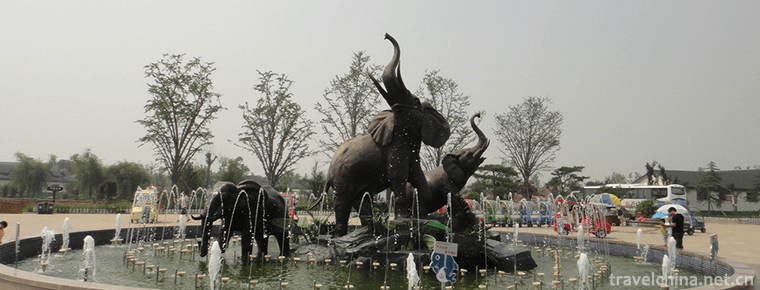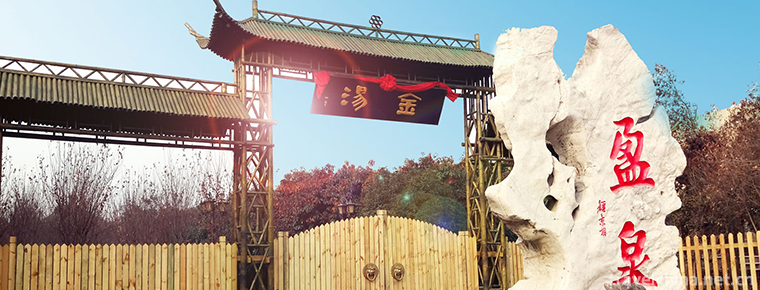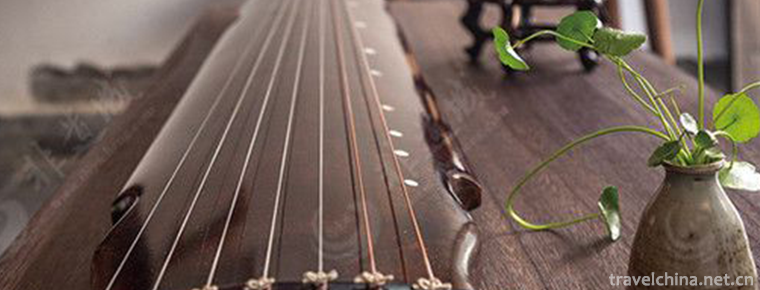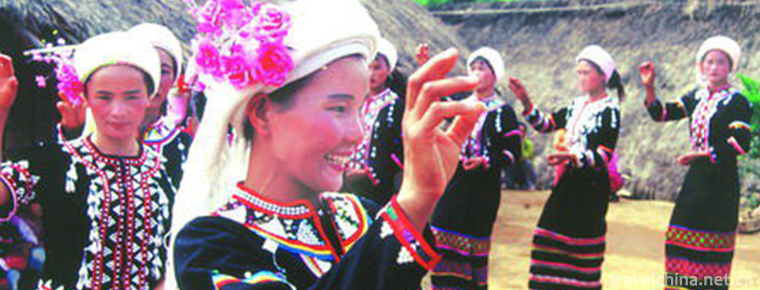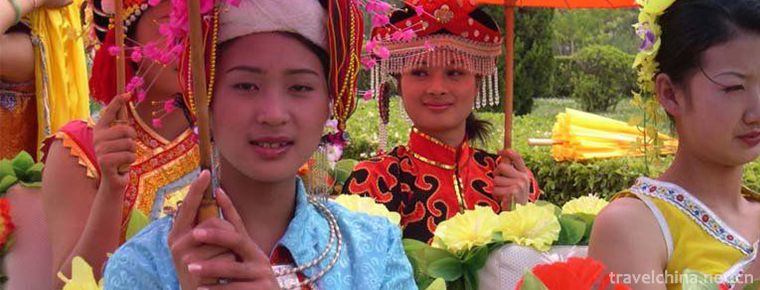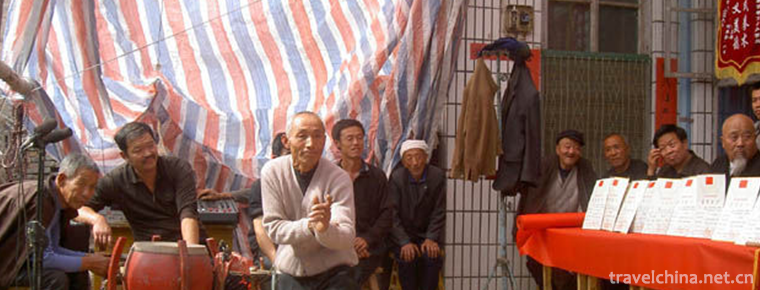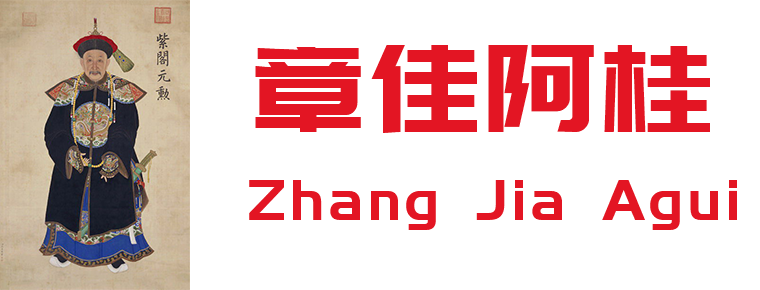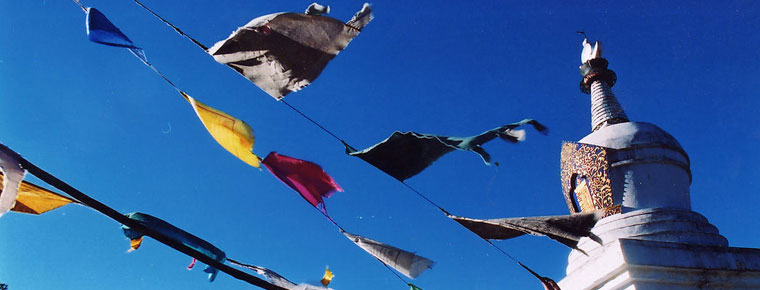Lianzhou Underground River Scenic Spot
Lianzhou City is located in the northwest of Guangdong Province and the upper reaches of Lianjiang River. The northeast is connected with Yizhang County in Hunan Province, the southeast with Yangshan County, the southwest with Liannan County, the Northwest with Lanshan County and Jianghua County in Hunan Province, and the north with Linwu County in Hunan Province. The total area is 2663.33 square kilometers. The total population is 500,000 (2003).
Main attractions
Lianzhou Underground River is divided into three layers. It is 1860 meters long, 47.8 meters high and 53.6 meters wide. It can provide 60,000 square meters for sightseeing. The temperature of the four seasons in the cave is kept at about 18 C, humidity is 96% - 98%, oxygen content is 21.4% - 21.6%, carbon dioxide content is between 0.01% - 0.019%, the air is fresh, warm in winter and cool in summer. Underground underground river is located in the lower layer, the flow from north to south, winding eighteen bends, through three beautiful canyons: "Longmen Gorge", "Lotus Gorge", "Banana Gorge", a total length of 1500 meters. It passes through the bottom of four hills. The water surface of the river is calm, the flow speed is slow, the widest part is 10 meters, the narrowest part is only 1.6 meters, and the water depth is 1-7 meters. Along the river banks are covered with stalactites, quartz, pillars, stone flowers, stone mantles and so on. There are thousands of forms, such as flying elephants across the river, bird peckers, eight immortals across the sea, Leonids, Underground Dragon Palace and Sea Lion Ying. Bin and other stone scenes. On the second and third floors of the land, there are many scenic spots, such as Buddha's light shining, Dongpi horseshoe, Guan Gong statue, Brazilian cactus, Nantianmen, Lianzhou Han Baiyuqueqiao, dinosaur fossils, Meng Jiangnu crying Great Wall, cave of fairies, Eden Garden and so on. Many tourists left poems of praise here, such as the poem inscribed by the famous poet Yang Yingbin: "Yuanming Fenggu Wang Weiyun, a hole in Lianzhou. If such a mountain is the upper boundary, why do we need to search for peach resources outside the world? "After visiting the underground river in May 1988, the famous writer Qin Mu wrote a downstream record of the mysterious and magnificent underground river.
Located in the south of Lianzhou City, the Huangchuan Three Gorges is the main tributary of the Beijiang River system in the Pearl River Basin. It originates from the Xingzi Hongyan Mountain, flows through Lianzhou, Yangshan and Yingde, and converges into the Beijiang River at the mouth of Lianjiang River. The Qing Dynasty Zhizhou Lin Huawan said, "The pearl of Lianxia is unique, and there are few places of interest in Jiuzhou. Only Wushan Wuxia can be compared with others." In ancient times, Lianxia, also known as the Huangchuan Three Gorges, stood by Longquan Gorge, Lengga Gorge and Yangtiao Gorge. The shortest and narrowest gorge in the Lianjiang Gorges is less than one kilometer long and its bank width is only over 30 meters. It can be jumped by sheep. Legend has it that a goat lives on the right side of the river running downstream and must jump to the mountain on the left to graze every day. One day, when it jumped over the canyon, there was a loud noise and the cliff collapsed. The goat could no longer jump home, so he stood on the hill on the left every day, year after year turning into a stone statue. Legend has it that the stone on the left Hill resembles a goat, that is, the goat that yearned to go home. So this is called Yangtiao Gorge. Because the canyon is narrow, there is no cloudless water in the canyon. Here, the river is deep green, the river is smooth, the water surface is like a mirror, the rocky rocks are rugged, and the bank walls seem to be open and close. As the ship passed, it felt as if it was in danger of being engulfed by two walls at any time. Standing at the bow of the boat looking up, on the eaves of the gorge wall, hanging the stone bells and breasts carved by the gods of heaven, in thousands of shapes. In addition, waterfalls pour down, such as thunder, surging, pearls shooting everywhere, the waterway is confused, there is indeed "suspected silver and snow on the river, white waves jumping into the boat in disorder" artistic conception. The fairy gorge is narrow and dangerous, the bay is deep and the cliffs on both sides are strange. One is as flat as a knife, and a big stone is thrown out in the wall, which looks like a dragon head. The Longquan Gorge is named for its waterfalls in the rocks and its hanging straight down rivers all the year round. When the river breeze is blowing gently, the water spray disperses into rain and mist. Under the sunset, the cliff walls in the mist are colorful and changeable. Longtan Ancient Town Resort will be built as the most distinctive brand of tourist attractions, with sightseeing as the main part, and with many functions such as leisure, vacation, entertainment, ecological tourism, cultural dissemination, natural protection, etc. It will also set up a night tour of the Three Gorges of Huangchuan and the Yao people's bonfire evening party project, and even a simple and extensive Lianzhou Museum, Xing. Class-I hotels and other sets of leisure activities, providing tourists with more leisure and entertainment options of a tourist resort. Become a well-known brand of eco-tourism area in northern Guangdong and even Guangdong, improve infrastructure and tourism facilities in an all-round way, create a civilized, fresh, excellent and comfortable tourism environment, and integrate ecology and tourism into people's lives. It makes Longtan Resort have the same elements as Yangshuo West Street, Lijiang Ancient City and Phoenix Ancient City, forming its own unique style. The layout of land use, road form and the relationship between buildings in the resort area all embody the concept of "hidden". Without competing with mountains and rivers, everything conforms to nature and belongs to nature. To highlight a "ecological" mainly, "water" as the main tourist resort.
geographical environment
Lianzhou Underground River is located in Dadong Village, Dongpi Town, 26 kilometers north of Lianzhou, a historic and cultural city. It is a typical giant natural limestone karst cave with skillful subtropical karst landform. Because the cave has a large mouth, the local residents call it Dakou Rock. Initial exploration in 1986 and formal opening to the outside world in 1988. It is famous at home and abroad for its mysterious and magnificent stalactites and cave hidden rivers. There are holes in the cave, bridges in the cave, rivers in the cave and waterfalls in the cave, which are the four great scenic spots of Lianzhou Underground River.
Lianzhou Shizhongru is famous since ancient times. According to Lianzhou Chronicle, Liu Yuxi, a Tang Dynasty writer, praised Lianzhou Shizhongru in The Story of Lianzhou Cishi Hall when he returned to the post of Lianzhou Cishi in 815: "Beautiful mountains, high spiritual juice, so Shizhongru is the first in the world and three hundred pearls at the age of Gong." "All the local officials in the past dynasties used stone bell milk as a tribute to the court.
From ancient times to the present, the underground river of Lianzhou has been a place for people in the nearby Dadong village to spend summer and play with children, but no one knows that there is a long underground river hidden in the deep of the cave. According to geological investigation, about 200 million years ago, Lianzhou Underground River was located in a vast ocean. Later, with the change of crustal movement, the seabed rose to land. During the second crustal stabilization period, large-scale collapses took place here, forming today's caves.
Historical culture
Lianzhou Underground River is located 26 kilometers northeast of Lianzhou City, an ancient historical and cultural city. It is a typical giant natural limestone cave in subtropical karst landform among the high mountains at the junction of Guangdong, Guizhou and Hunan provinces. According to the analysis of geologists, the cave was formed by crustal movement 200 million years ago, and now it has a tourist area of 45,000 square meters. The highest place is 47.8 meters, the widest place is 53.6 meters. The temperature in the cave is kept at about 18 degrees Celsius in the four seasons. The air is fresh, warm in winter and cool in summer. It is a holy place for tourism and summer resort.
Traffic information
Lianzhou to the underground river is about 26 kilometers. Starting from Lianzhou, it goes north along Yonglian Highway (Line S114) and arrives 2 kilometers after turning right in Dongpi Town.
Lianzhou to Huangchuan Three Gorges Wharf
It is about 18 kilometers from Lianzhou to Huangchuan Three Gorges. From Lianzhou City, go straight along Huiguang Road to Chengnan Bridge. Turn left about 1KM from Chengnan Toll Station and go straight to X389 and 12KM (pay attention to roadside signs along the way). Navigation can search "Longtan Village Committee".
Lianzhou to Tianlongxia
It is about 50 kilometers from Lianzhou to Tianlongxia. Starting from Lianzhou, go north along the first level of Qinglian to Dalubian Town and then turn to X834.
Lianzhou to Fushan (Forty-ninth Futian)
It is about 18 kilometers from Lianzhou to Fushan. Starting from Lianzhou, go north along Yonglian Highway (Line S114) to Xintang and then turn to Line X387.
Lianzhou to Liannan Nangang Millennium Yaozhai
Lianzhou to the Millennium Yaozhai is about 38 kilometers. Starting from Lianzhou, we will transfer from Qinglian I to Liannan County Town to S261 (16 kilometers later) and then to X397.
Lianzhou to Liannan Yaoshan Campfire Evening
Lianzhou to the bonfire party about 11 kilometers. Starting from Lianzhou, it will reach Liannan County along the first level of Qinglian.
Lianzhou City to Lianshan Eagle Yangguan
Lianzhou to Yingyangguan is about 68 kilometers. Starting from Lianzhou, it goes straight along National Highway 323.





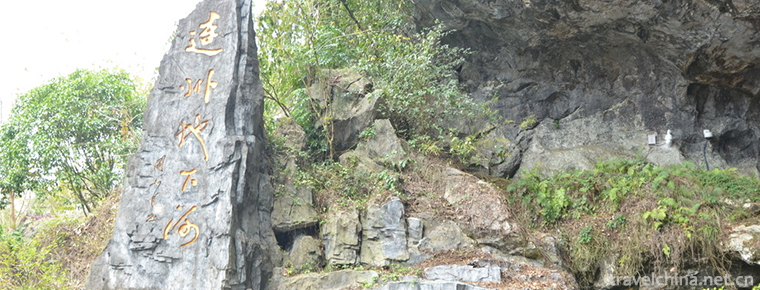
-
Shenzhen Overseas Chinese Town Tourist Resort
Shenzhen Overseas Chinese Town, located in the Rhododendron Hill of Shenzhen Overseas Chinese Town, is the latest generation of large theme parks built by the Overseas Chinese Town after the splendid .
Views: 135 Time 2018-12-12 -
Shangrao Lingshan Scenic Area
Shangraolingshan Scenic Area, located in the north of Shangrao County, Shangrao City, Jiangxi Province, is a national scenic spot with an area of 160 square kilometers. Lingshan is listed as the ".
Views: 118 Time 2018-12-19 -
Linyi Animal and Botanical Garden
Linyi Animal and Botanical Garden is a national AAAA-level tourist attraction , located at the core of Linyi Economic and Technological Development Zone, Shandong Province.
Views: 223 Time 2018-12-22 -
Longxing Temple
Longxing Temple, alias Dafo Temple, is located in Dongmenli Street, Zhengding County, Shijiazhuang City, Hebei Province. It was originally Longteng Garden of Yanmu Rongxi after the Eastern Jin Dynasty.
Views: 159 Time 2019-02-06 -
Xinyingtai Eco Spa Resort
Yingtai Eco-Hot Spring Resort (Eco-Park) is located on the parallel road of Tengzhou City, Shandong Province. It is a comprehensive service enterprise integrating eco-catering.
Views: 180 Time 2019-02-26 -
Guqin art
Guqin art is embodied as a solo art form of flat stringed instruments. It also includes both singing and playing, as well as the ensemble of piano and xiao..
Views: 91 Time 2019-05-01 -
Lusheng Dance of Lahu Nationality
Hulusheng dance is a representative of the Lahu nationality. It mainly spreads in busy Nuo Township, Mengmeng Township, Dawen Township, Mengku Township and other Lahu villages in Shuangjiang .
Views: 166 Time 2019-05-10 -
Maonan Fat Cover
"Fat set" is the general name of Maonan people's vow-making activities. It prevailed in the Ming and Qing Dynasties. At the beginning, Maonan people used Nuo rituals to sacrifice the heavens.
Views: 78 Time 2019-05-27 -
Nu Fairy Festival
Fairy Festival is a traditional folk festival of Nu people in Gongshan area of Yunnan Province. The local flower festival, also known as the Flower Festival, is held on March 15 of the lunar calendar .
Views: 289 Time 2019-06-08 -
Xinyiquan
Xinyiquan, one of the traditional Chinese boxing, is an important part of Chinese martial arts culture and Oriental mysterious culture. It is a wonderful flower in the hundred gardens of Chinese marti.
Views: 150 Time 2019-07-06 -
Zhang Jia Agui
Ah Kui (September 7, 1717 - October 10, 1797). Zhang Jiashi , word Guang Ting , Number Cloud cliffs Manchuria's blue flag people (after the war in Xinjiang were promoted to Zheng Bai Qi), a Bachelor o.
Views: 192 Time 2019-09-11 -
Paoma mountain Paoma Hill
Paoma mountain is located in the south of Kangding City, Ganzi Tibetan Autonomous Prefecture, Sichuan Province. It is the extension of Gongga mountain to the north. It is the core area of the "two-hour tourism economic circle around Gongga" and a national .
Views: 109 Time 2020-12-06
